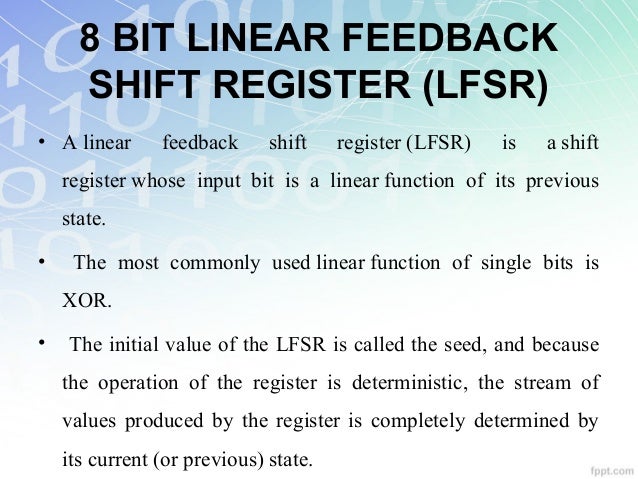

Hence, this input is also called as serial input. In this shift register, we can send the bits serially from the input of left most D flip-flop. All these flip-flops are synchronous with each other since, the same clock signal is applied to each one. That means, output of one D flip-flop is connected as the input of next D flip-flop. This block diagram consists of three D flip-flops, which are cascaded. The block diagram of 3-bit SISO shift register is shown in the following figure. The shift register, which allows serial input and produces serial output is known as Serial In – Serial Out (SISO) shift register. Serial In − Serial Out (SISO) Shift Register Parallel In − Parallel Out shift register.Parallel In − Serial Out shift register.Serial In − Parallel Out shift register.Following are the four types of shift registers based on applying inputs and accessing of outputs. An ‘N’ bit shift register contains ‘N’ flip-flops. If the register is capable of shifting bits either towards right hand side or towards left hand side is known as shift register. The group of flip-flops, which are used to hold (store) the binary data is known as register. In order to store multiple bits of information, we require multiple flip-flops. It is shown that the observed errors in statistical modeling using pseudo-random numbers do not occur if the model examines linear systems with constant parameters, but in case models of nonlinear systems, higher order moments can have a Gaussian distribution.We know that one flip-flop can store one-bit of information. It is supposed that the formation of the binary sequence output from the binary probabilistic element is produced using a physical noise process. The received analytical dependencies can help in evaluating the statistical characteristics of the processes in solving problems of statistical modeling. Based on these studies, we obtained an analytic relation between the parameters of the binary sequence and parameters of a numerical sequence with the shift register output. In this article we introduce the concept of probabilistic binary element provides requirements, which ensure compliance with the criterion of "uniformity" in the implementation of the basic physical generators uniformly distributed random number sequences. This block implements LFSR using a simple shift register generator (SSRG, or Fibonacci) configuration. The sequence generator generates a sequence of pseudorandom binary numbers using a linear-feedback shift register (LFSR).


 0 kommentar(er)
0 kommentar(er)
